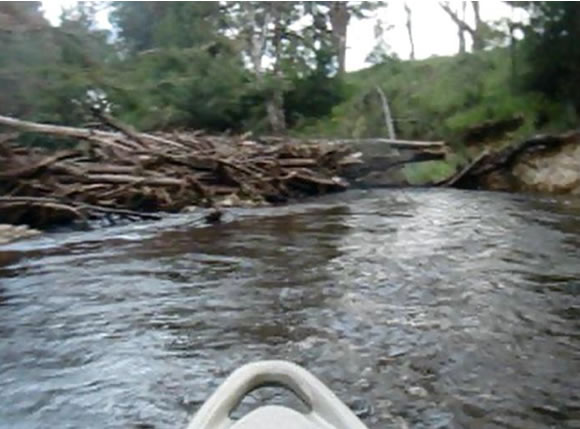When I was a boy, my father and I were unexpectedly swept into a log jam (pile of logs the size of a house) on the banks of the Elk River while canoeing near our home.
Somewhat similar looking jam, but think bigger pile of logs, and more rapid waters:

My Dad, being an experienced voyageur from NW Ontario, instinctively jumped out of the canoe up onto the log jam. Me, being barely 13, watched the water hit the hull of the canoe with wide eyes for about 2 seconds before the canoe suddenly flipped in the swift current and took me under the log jam with it. Fortunately for me, the logs were piled there during higher waters, so after a couple of seconds of getting drug along the rocks at the bottom of the river under the logs and my canoe, I eventually popped back up on the other side of the jam, with my Dad close behind me (he jumped in after me when I got towed under).
After that incident I just considered jumping out of the canoe onto the jam before it gets sucked under to be the appropriate course of action in this situation. But now that I'm a father, I've been wondering, "What would my Dad have done, if there was no way out the other side?". He just dove in blindly after his son, and we were lucky that there was room under the jam for us to go all the way underneath.
What if there was no way out the other side?
What can you do to help yourself or someone else if they get sucked under a jam and get pinned against the logs underneath by the current?